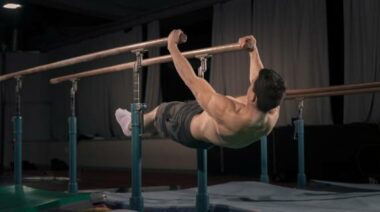You’ve probably heard people talk about foam rolling and mobility work, but have you ever heard them say they needed to go work on their pelvic floor? Didn’t think so. Instead, you might hear them joke about peeing their pants during box jumps or having to wear a pad so they can make it through race day without public humiliation.
How does your pelvic floor feel after that race? [Photo courtesy of Jorge Huerta Photography.]
A review published in February 2016 acknowledged the need for more research about the relation between pelvic floor disorders and physical activity. The research review, titled “Physical activity and the pelvic floor” was published in the American Journal of Obstetrics and Gynecology. The research team looked at literature published from 1980 to March 2015 to determine how athletic activity relates to pelvic floor disorders such as stress urinary incontinence, pelvic organ prolapse, and fecal incontinence.
The goal of this paper was “to summarize studies reporting the association between physical activity and pelvic floor disorders.” But the researchers noted many of the studies they used in their analysis were quite limited. A randomized, controlled trial would be the best way to obtain information about the long-term correlation between pelvic floor disorder (PFD) and physical activity, but such a study is impossible for practical and ethical reasons. Fortunately, we cannot doom an entire group of people to a life without exercise to see if they suffer from PFD more than another group of people doomed to daily CrossFit, even if we do it in the name of science.
After reviewing the research, the authors came to the following conclusion:
The primary findings of this review include that urinary incontinence during exercise is common and is more prevalent in women during high-impact sports. Mild to moderate physical activity, such as brisk walking, decreases both the odds of having and the risk of developing urinary incontinence.
Women who participated in regular, high-impact physical activity were also more likely to report stress urinary incontinence and fecal incontinence. However, older women who participated in mild to moderate activity had lower odds of experiencing fecal incontinence. I would be curious to see what the results are with male subjects, as these issues are not limited to women, by any means.
What stood out to me about this review was not that high-intensity, high-impact activity might affect pelvic floor function. That’s a no-brainer, really. But the potential for mild to moderate physical activity to have a protective effect was interesting. Perhaps the middle ground between completely sedentary behavior and random spurts of jumping and running might be the best way to go.
Time to go for a walk?






